Introducing DevOps Assembly Line
In easy words, "DevOps Assembly Lines" could be a "pipeline of pipelines." DevOps assembly lines are targeted at automating and connecting activities performed by several groups as part of software development phases like continuous integration for the developer, infrastructure and configuration management for an operator, automation script for the testing team, Security-related for SecOps, and lastly and enabling CI.
Assembly lines are used to organize day-to-day tasks from all teams that collaborate for the project's dignity. In short, DevOps assembly lines help us to automate and scale end-to-end workflows of applications across all teams and tools, which enable continuous delivery. The Future is the DevOps Assembly line. 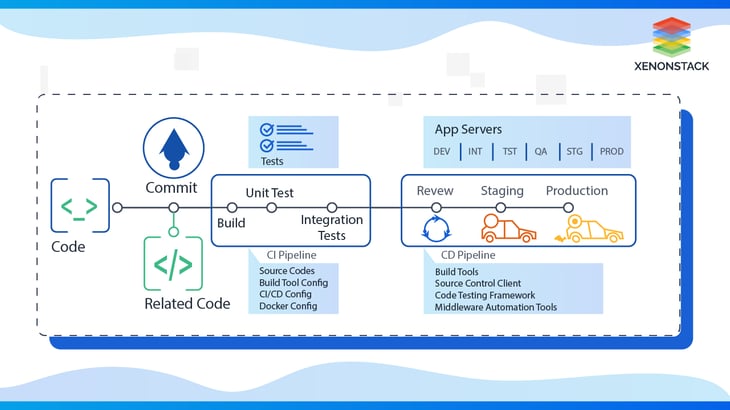
What is the Continuous Integration Pipelines?
Before the DevOps Assembly Line, we used Continuous Integration (CI) pipelines, which are defined as a simple process of automating build and unit tests for each code change done by any team.Types of Continuous Integration Pipelines Pipelines
Discussed below are the types of CI Pipelines for enhancing your knowledge about Continuous Integration.- The Classic Continuous Integration
- Continuous Integration with Stages
- Continuous Integration with Parallel Stages
- Continuous Integration with Forked Stages
The Classic Continuous Integration
In the Classic CI, all build and test instructions were included in a single job, and instructions were executed sequentially. If all instructions run successfully, only then was CI successful.Continuous Integration with Stages
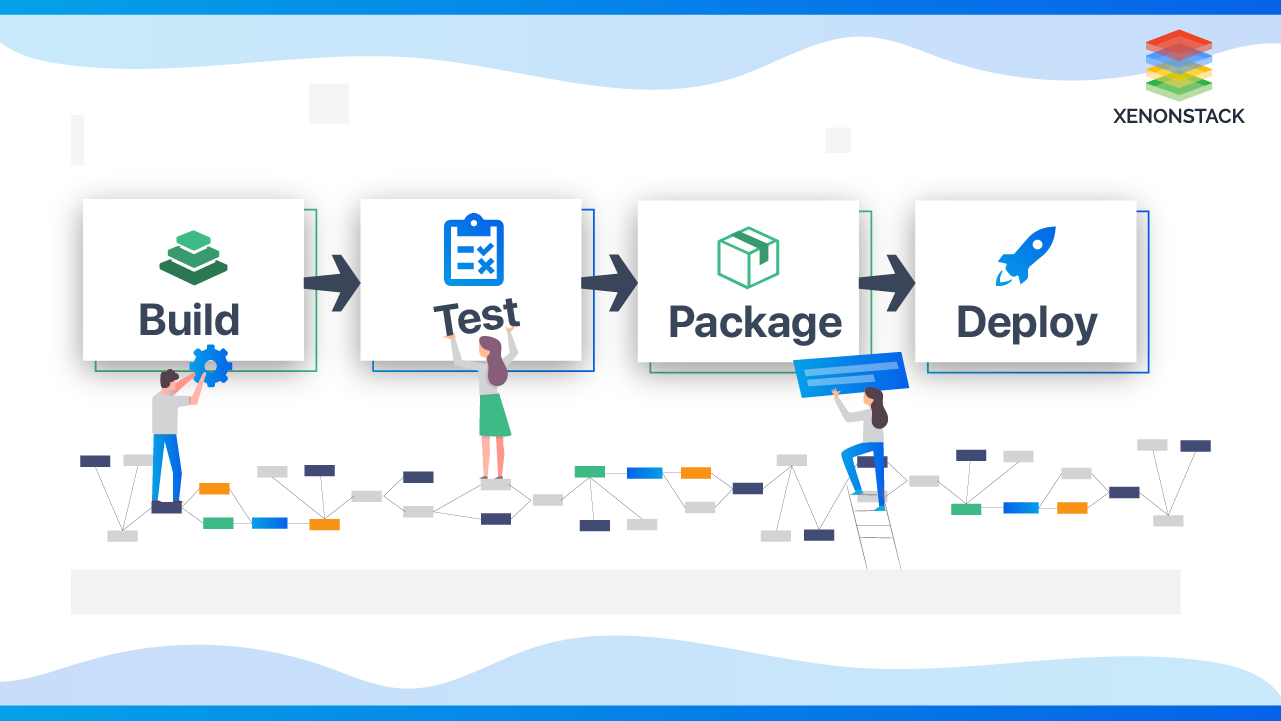 The above diagram shows that an application is deployed on different stages (dev/uat/prod). In the CI approach, we have to write three different jobs for a complete CI process (build, test, deploy), and all the jobs depend on the successful completion of the previous job, which means the test will run if build a job was successfully run the same as deploy.
The above diagram shows that an application is deployed on different stages (dev/uat/prod). In the CI approach, we have to write three different jobs for a complete CI process (build, test, deploy), and all the jobs depend on the successful completion of the previous job, which means the test will run if build a job was successfully run the same as deploy.
Continuous Integration with Parallel Stages
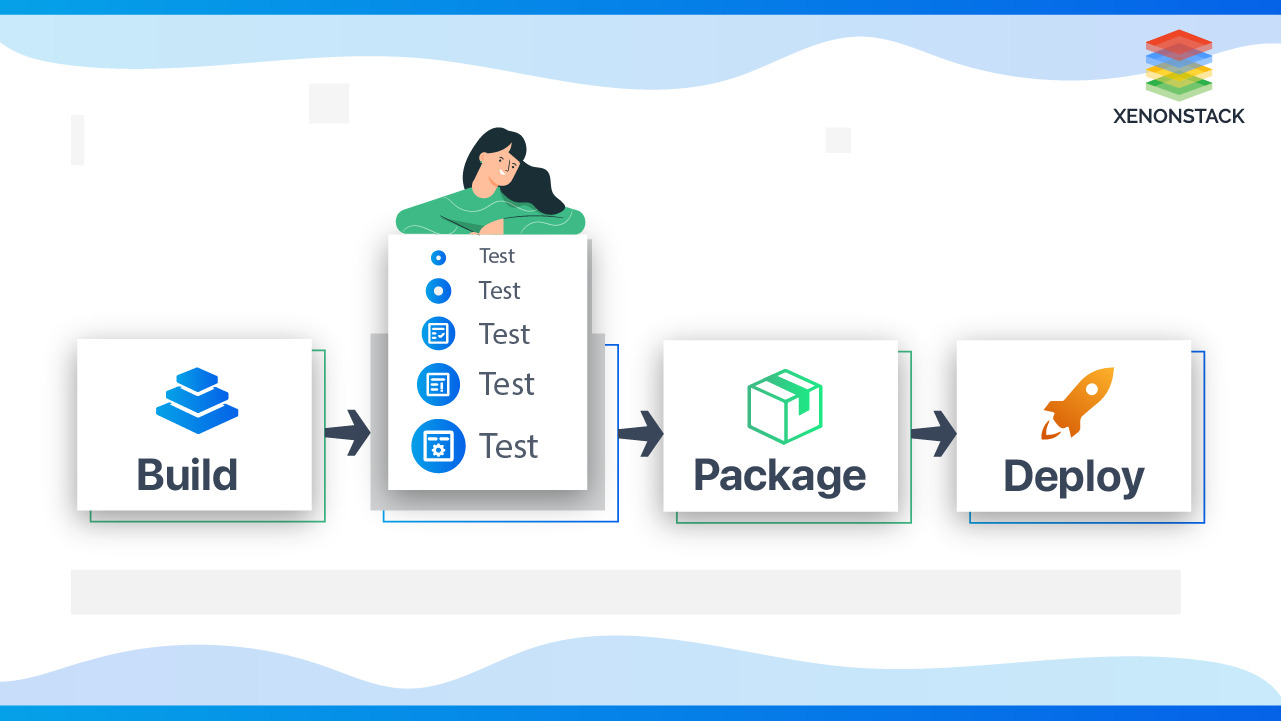 Pipelines give us a lot of flexibility and control over our process by converting the jobs into stages. Now we don't need to create multiple jobs for different phases of CI/CD. We need to create a single job with all the stages with flow control.
Pipelines give us a lot of flexibility and control over our process by converting the jobs into stages. Now we don't need to create multiple jobs for different phases of CI/CD. We need to create a single job with all the stages with flow control.
Continuous Integration with Forked Stages
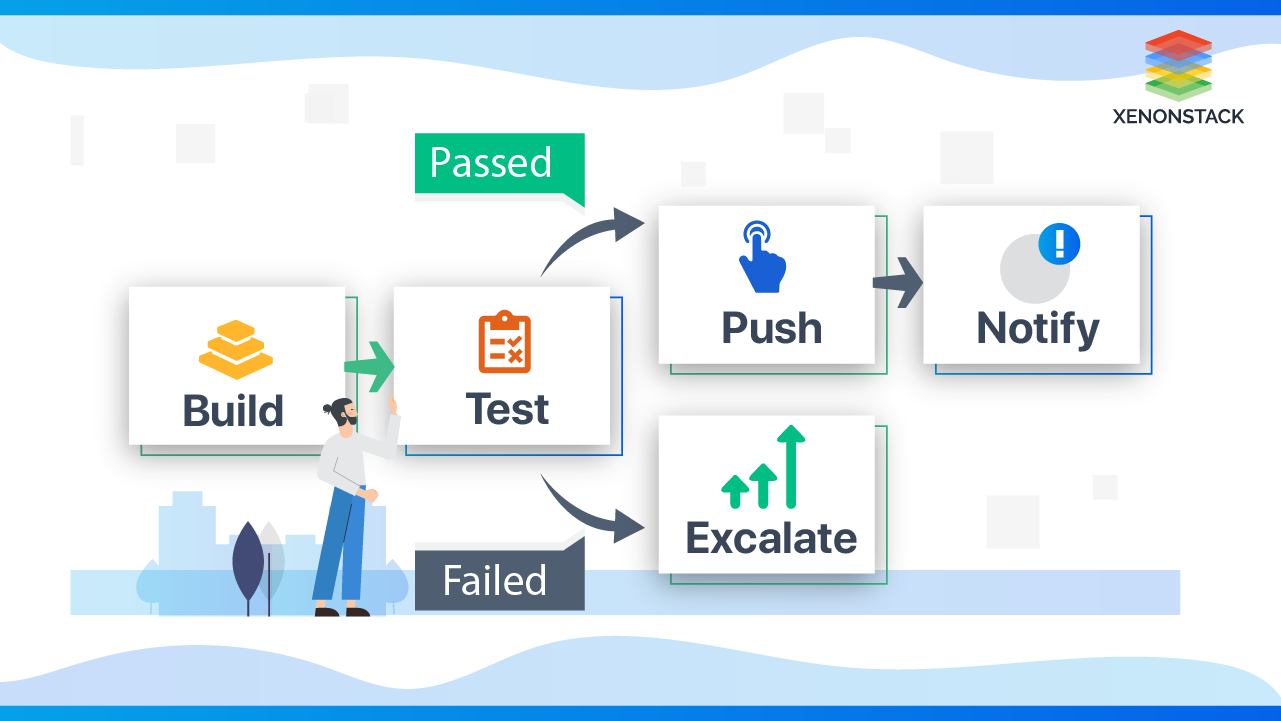 The CI pipeline's major disadvantage is as application architecture evolves rapidly, from N-tier to Service-Oriented Architecture to Microservices, and the current linear approach to software delivery cannot handle the complexity of Microservices or Serverless architectures. Why was there the Need for CI with stages, CI with parallel stages, and CI with forked stages? Know below!
The CI pipeline's major disadvantage is as application architecture evolves rapidly, from N-tier to Service-Oriented Architecture to Microservices, and the current linear approach to software delivery cannot handle the complexity of Microservices or Serverless architectures. Why was there the Need for CI with stages, CI with parallel stages, and CI with forked stages? Know below!
- Defining the CI with stages can get outcomes quicker without waiting for the complete workflow to finish.
- Running stages can test your code on various environments and language versions and get faster feedback.
- The next stage of your CI will be decided based on your previous stage results.
Evolution of DevOps Assembly
There is a lot to know when it comes to DevOps Assembly Lines. The zipped images below depict the same.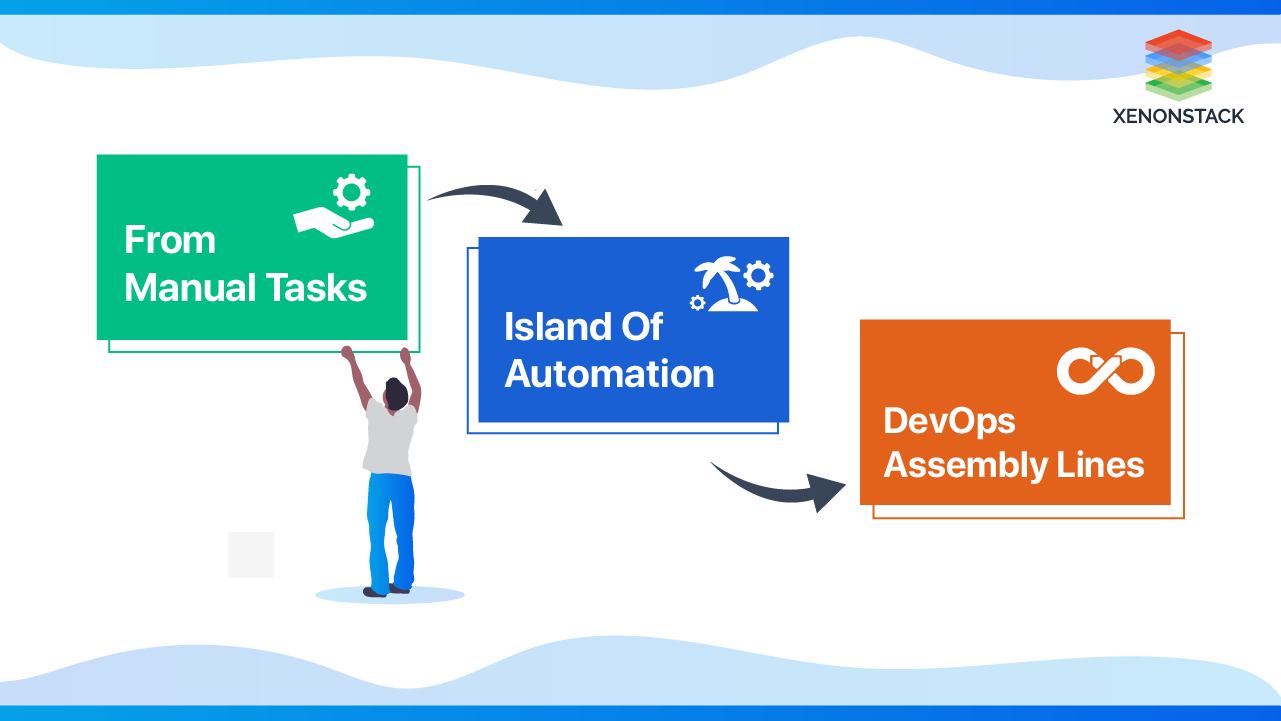
What are the aspects of DevOps Assembly Lines?
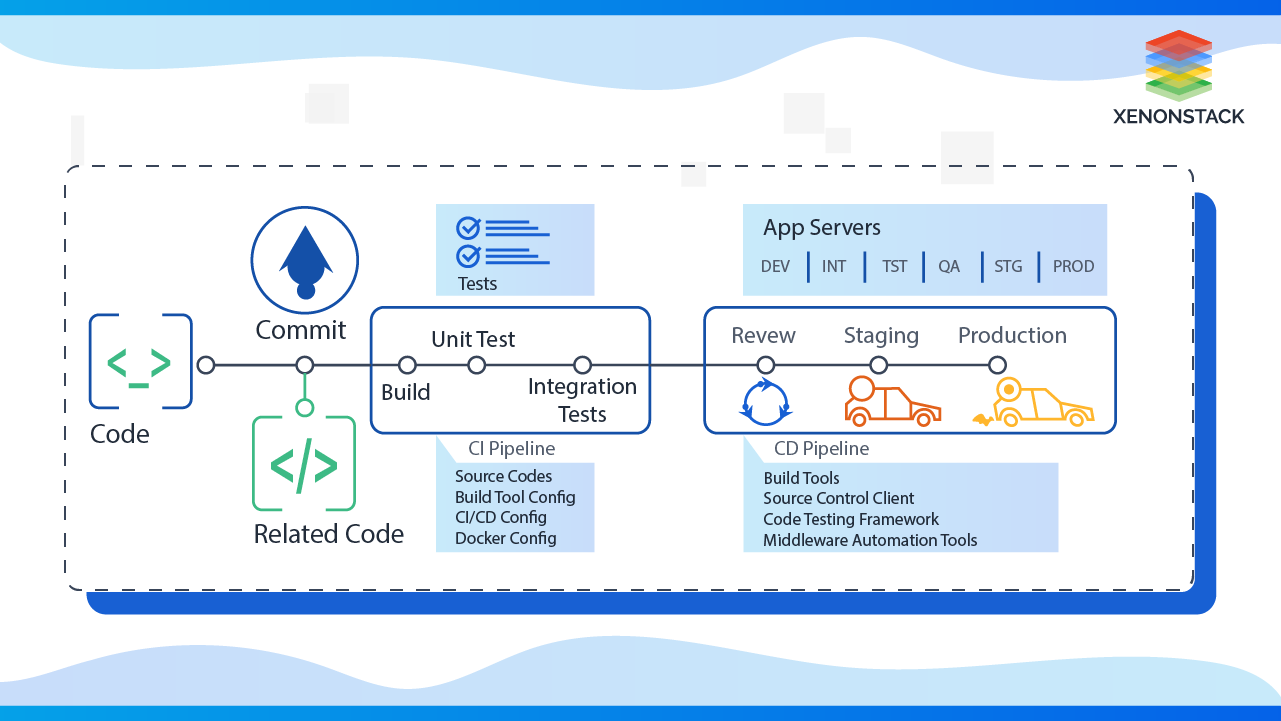 Go through the points below to know certain critical aspects of DevOps Assembly Lines:
Go through the points below to know certain critical aspects of DevOps Assembly Lines:
- DevOps Assembly lines enable toolchain collaboration.
- Define your workflows as code with a standard, declarative specification language that is easy to learn and versioned.
- Gaining powerful end-to-end visibility.
- Integrating with technical stacks and application architectures of today's what any organization uses so that the Future will be a simple plug-and-play interface.
What are the Benefits of DevOps Assembly Lines?
DevOps Assembly Lines can benefit in a lot better way than one may think:- Accurate Continuous Deployment with Interoperability.
- Powerful nested visibility.
- Rapid onboarding and scale with an "as-code" philosophy.
- Native Integrations.
- Team-based business intelligence and analytics.
DevOps is all about continuous delivery and pushing code as fast as possible. Click to explore about, 15 DevOps Metrics
What are the Best Practices of Continuous Integration?
Continuous integration is an approach in which developers merge their code into a shared repository several times a day.
The best practices of Continuous Integration are -
- Build Automation
- Main Code Repository
- Self-testing Build
- Commit Early and Regularly
- Fast Pipelines
- Staging Builds
- Easy Rollback
Build Automation
In CI, we create such a build environment that the build can be triggered even with one command. This is done all the way up to deployment to the production environment.
Main Code Repository
Maintain a main branch in the code repository that stores all the production-ready code. This is the branch we can deploy to production at any time.Self-testing Build
In CI, every build should be self-tested, which means that with every build, there is a set of tests that ensure that changes are of high quality.Commit Early and Regularly
This is a fundamental principle to be able to implement CI in your organization.Fast Pipelines
It is an important requirement for the team to be productive if a team has to wait for an hour-long for the pipeline to finish, just being able to deploy a one-line change so the team will get frustrated quickly.Staging Builds
The build pipeline could be broken down into smaller chunks and executed parallel to speed up the build process.Easy Rollback
If something goes wrong, then there should be an easy “one button” way to roll back changes. It is the most important part of a successful CI pipeline.What are the Use Cases of Continuous Integration Automation?
Get to know some of the automation use cases of CI Pipelines:- Continuous Integration
- Test automation
- Infrastructure provisioning
- Release management
- Config management
- Deployments
- Security patching
- Network configuration
How do DevOps Assembly Lines and CI Pipelines support the functioning of enterprises?
- Capability to immediately establish workflows across multiple pipelines.
- Integrations with all popular source control systems.
- Enabling rapid changes and scaling for various applications or microservices.
- Abstractions of all delicate information like passwords, tokens, keys, etc.
- Roles and permissions restricting assembly line and pipeline action.
- Metrics and Analytics across pipelines to help identify bottlenecks.
- Visibility into each pipeline and stage, including logs, status, and versioned data.
- It handles all DevOps infrastructure, including spinning VMs and containers up and down as required.
- Roles and permissions restricting assembly line and pipeline actions.
- Release automation features such as semantic versioning of packages.
- Ability to pass state and other information while triggering dependent pipelines.
What's next?
DevOps assembly lines aim to automate tasks and define easy workflows across multiple pipelines, removing inefficiency and unnecessary human-dependent steps. It provides an ideal situation for your company’s application teams. Developers push code to a repository. This code will be integrated, tested, deployed, tested again, merged with infrastructure, go through security and quality reviews, and be ready to deploy with confidence.
- Read more about to Integrate AIOps in DevOps
- Explore here Security Testing in DevOps Techniques
.webp?width=1921&height=622&name=usecase-banner%20(1).webp)


